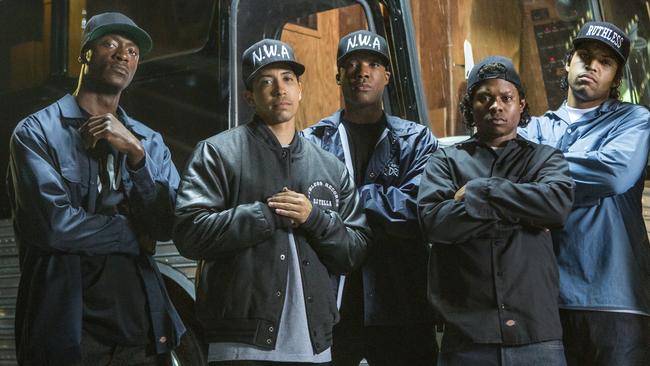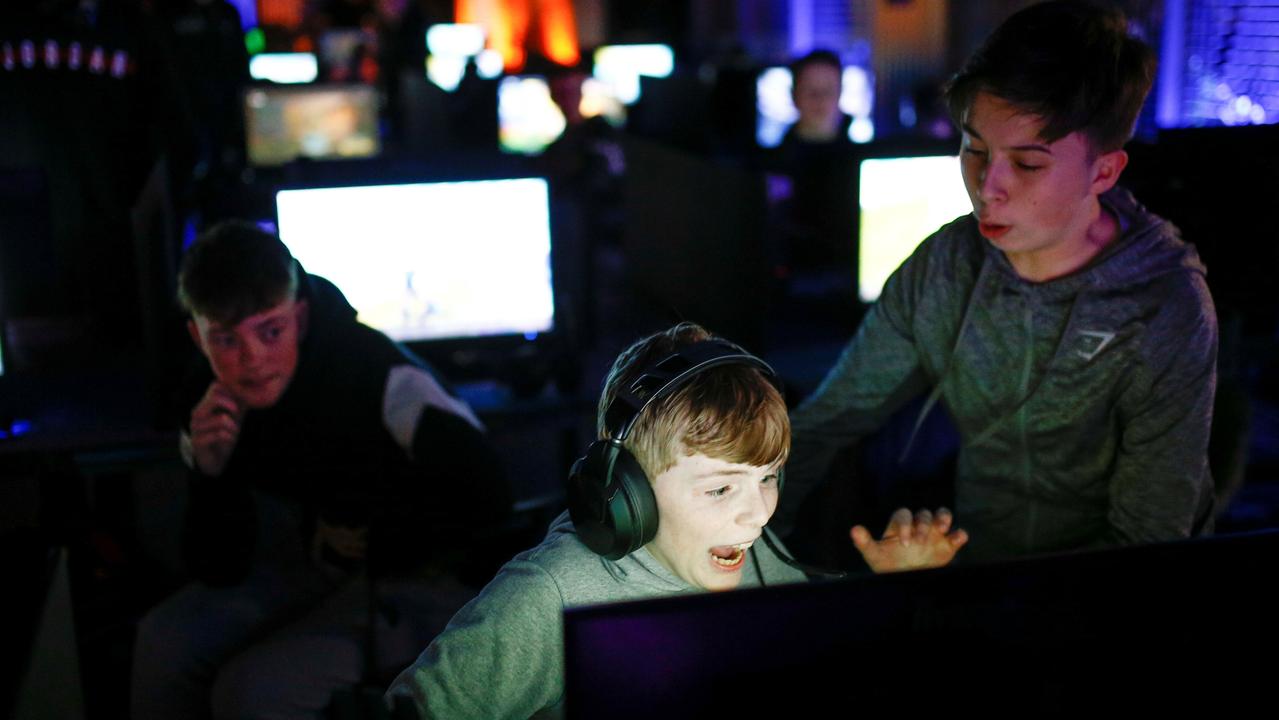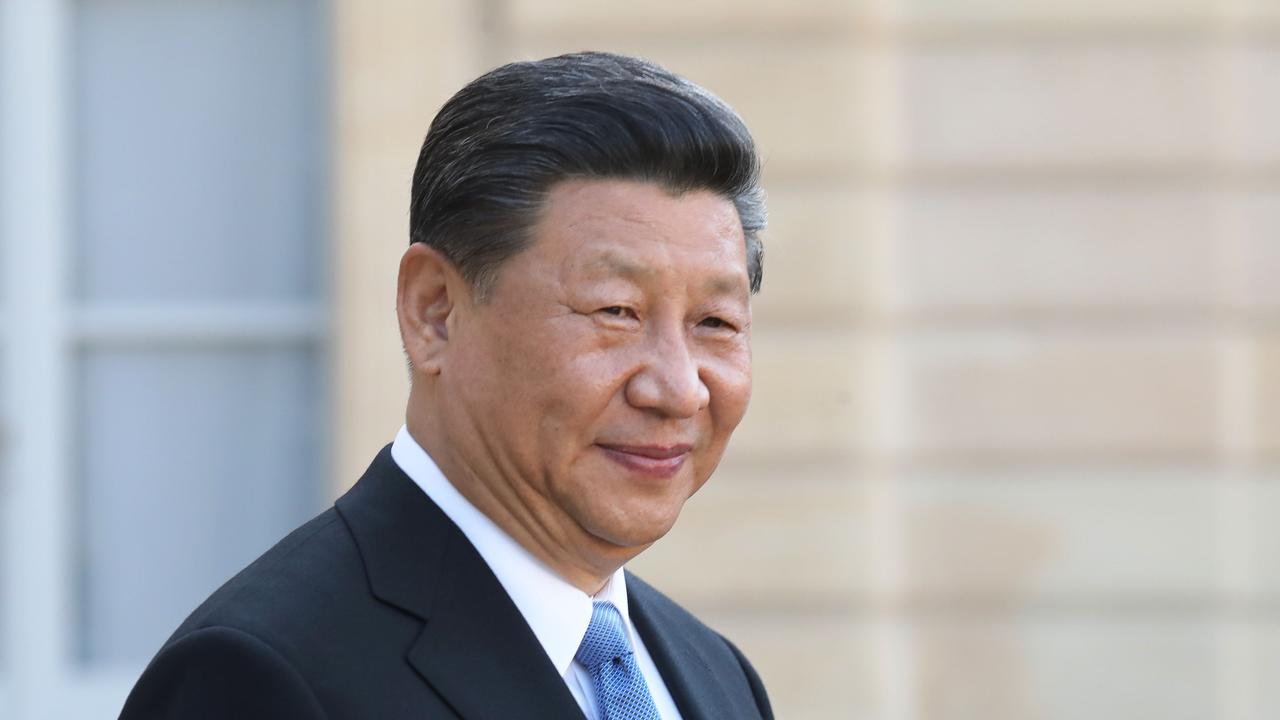Straight Outta Compton: NWA in hip hop’s group phase
NWA biopic Straight Outta Compton revisits the days when rap artists preferred to be part of a group.

In O’Shea Jackson’s teenage dreams of hip-hop stardom, he was never alone. When he wrote rhymes at Taft High School, a 90-minute bus ride from his home in Compton, California, he imagined himself in Run-DMC, EPMD or Public Enemy.
“I knew if I ever started really rapping, then I would want a crew around,” says Jackson, better known as Ice Cube, the actor who first became famous as a member of the hip-hop group NWA. “My favourite artists were in groups.”
NWA, the west coast gangsta-rap pioneers who are the subject of the new biopic Straight Outta Compton, took off at a time when hip-hop solo stars, with exceptions such as LL Cool J, Big Daddy Kane and Ice-T, were scarce. The group’s chemistry and camaraderie were important.
“Everybody would kind of have a little corner in the studio,” recalls DJ Yella of NWA. “We did songs so fast. It only took us six weeks for the first album. We clicked like a machine.”
It wasn’t until 1989, when Ice Cube quit for a solo career, that he fully understood the significance of the collective mentality.
“I missed the group, mainly on stage,” he says. “I had to figure out how to generate that same energy by myself, and it’s more work. You can’t have an off night.”
Over 25 years, though, the hip-hop group has become an endangered species, almost as rare as breakdancing. Every rapper who topped Billboard’s R&B/hip-hop album chart last year was a solo star; the only hip-hop groups that made this year’s top 20 airplay chart in the same category were Rae Sremmurd (a duo) and Rich Gang.
Straight Outta Compton points to one reason why: more than half the movie is about NWA’s angry and sometimes violent break-up, suggesting even the greatest hip-hop groups could be too volatile to stay together long.
Groups were dominant in the genre’s early days, beginning with Grandmaster Flash and the Furious Five, but when hip hop became hugely profitable in the early 90s, they began to break apart.
“It’s more money in the solo play,” Ice Cube says. “The royalties don’t go up for how many members you have in the group.”
An important exception was the Wu-Tang Clan, which emerged in 1993 with nine emcees. Wu-Tang had the foresight to engineer solo spinoffs for all of its members, from RZA to Ghostface Killah, but whenever it went on the road as a collective, travelling logistics became unwieldy.
“There are a lot of moving parts to a tour: rounding up passports and passport photos ... assuring there’s no pork in the catering ... rounding everyone up again to get back to the venue for the show,” says Sophia Chang, a former Island Records executive.
By about 15 years ago, the back-up “crew” model had replaced more democratic, NWA-style groups, for the most part, from 50 Cent’s G-Unit to Nelly’s St Lunatics. Not long after that, crews evolved into “features”, with guest stars making appearances on others’ singles, a trend that continues today on almost every hip-hop hit.
The feature approach is cost-effective in this age of dwindling recording profits. Rather than paying studio expenses for a group or crew, artists and producers can simply exchange verses and beats online.
Many from the old-school hip-hop world argue the limited perspective of a solo star makes the music more narrow and self-centered. Scarface wrote most of the Geto Boys’ 1991 classic Mind Playing Tricks on Me, but ceded one lyric to Willie D and alternated verses with his bandmates. Back then, the Geto Boys wrote individually, then came together to record.
“It’s a lot of creative juices flowing in the studio,” says Scarface, who recently cancelled a tour with the reunited group and is focusing on his solo album Deeply Rooted. “All I had to do was write my part and I was done. It made life easier then.”
NWA’s MC Ren blames record executives for sensing profit in hip hop, then discouraging groups in favour of conglomerations of artists and producers they could control.
“They started [putting] people in collaboration records,” he says. “You buy an album and it’s like 15 people on there. You don’t get a chance to really feel that artist.”
Some of today’s rappers are trying to bring back the group inspiration. Odd Future, loosely following the Wu-Tang model, has spun off lucrative solo careers for singer Frank Ocean and rappers Tyler, the Creator and Earl Sweatshirt; Rick Ross’s Maybach Music Group and A$AP Mob have helped break solo superstars Meek Mill and A$AP Rocky, respectively. Similarly, rising star Fetty Wap has a flexible crew, Remy Boyz, who did not appear on this year’s smash Trap Queen,but worked with him regularly and recently hit the charts on follow-up singles 679 and My Way.
Lyor Cohen, who was present during hip hop’s early days as an artist manager and Def Jam Records executive, says: “It’s much more creative and interesting when there’s a group, because there’s characters and people and inflections ... There’s definitely something missing in our industry by not having more groups.”
Ice Cube, who has evolved from NWA member to solo rapper to movie star to Straight Outta Compton co-producer, agrees, pointing to the deficiency in today’s hip-hop landscape.
“Solo artists make their records by committee,” he says. “You miss the different textures, different personalities, different flows.”
The Wall Street Journal
Straight Outta Compton is in national release.


